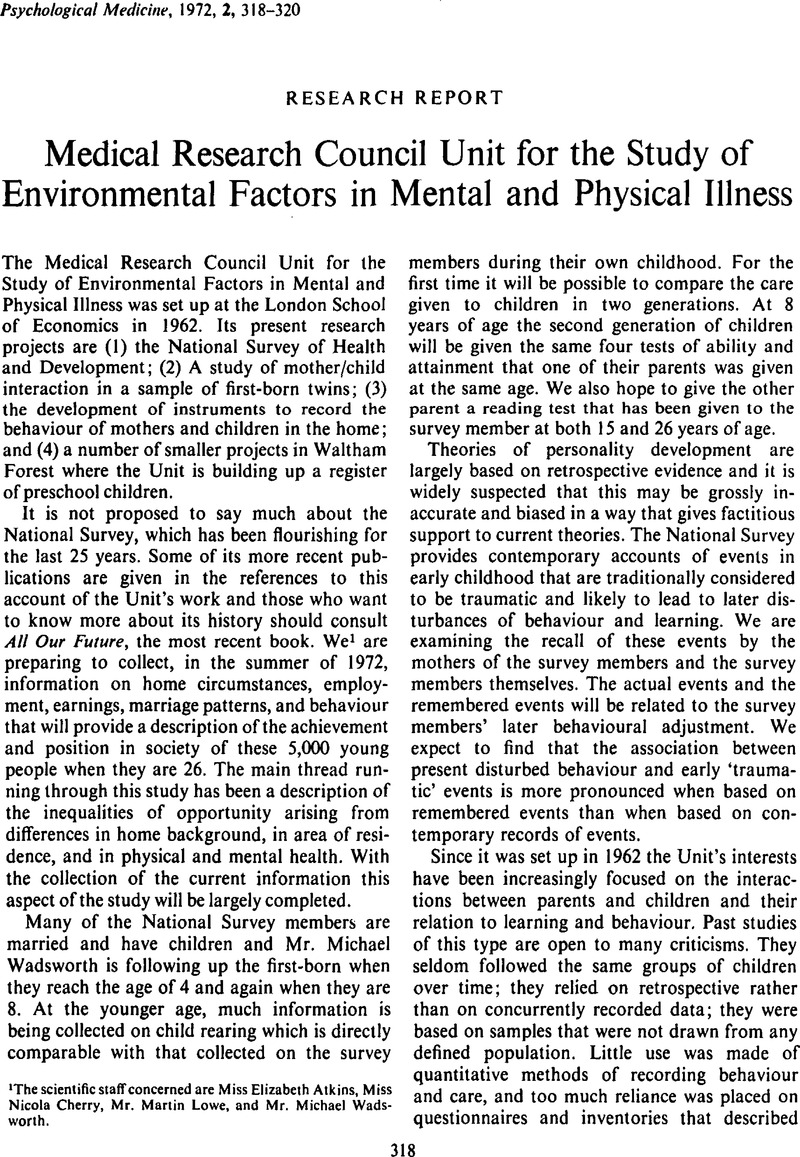Crossref Citations
This article has been cited by the following publications. This list is generated based on data provided by Crossref.
Wadsworth, M.E.J.
1987.
Follow‐up of the first national birth cohort: Findings from the Medical Research Council National Survey of Health and Development.
Paediatric and Perinatal Epidemiology,
Vol. 1,
Issue. 1,
p.
95.



